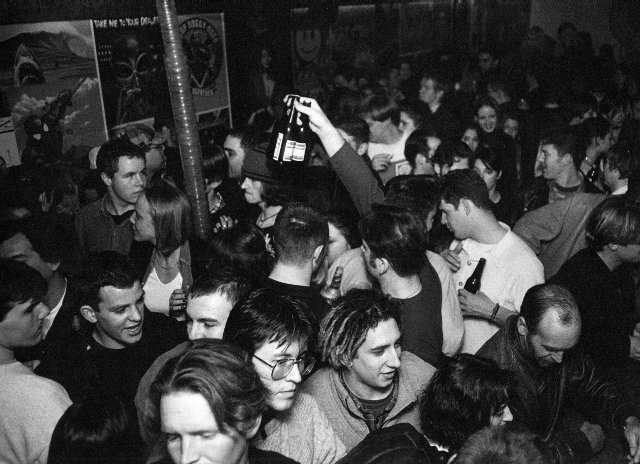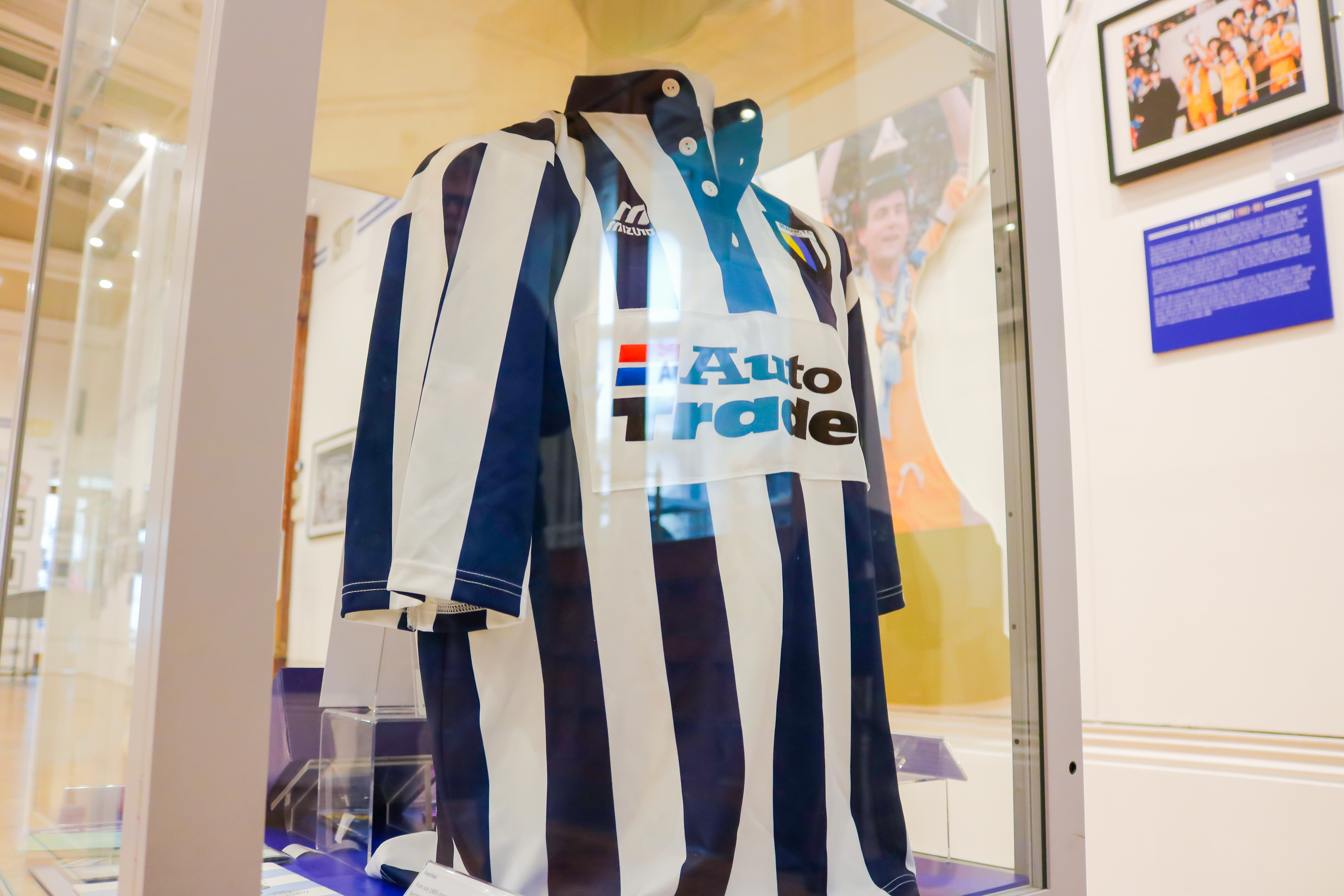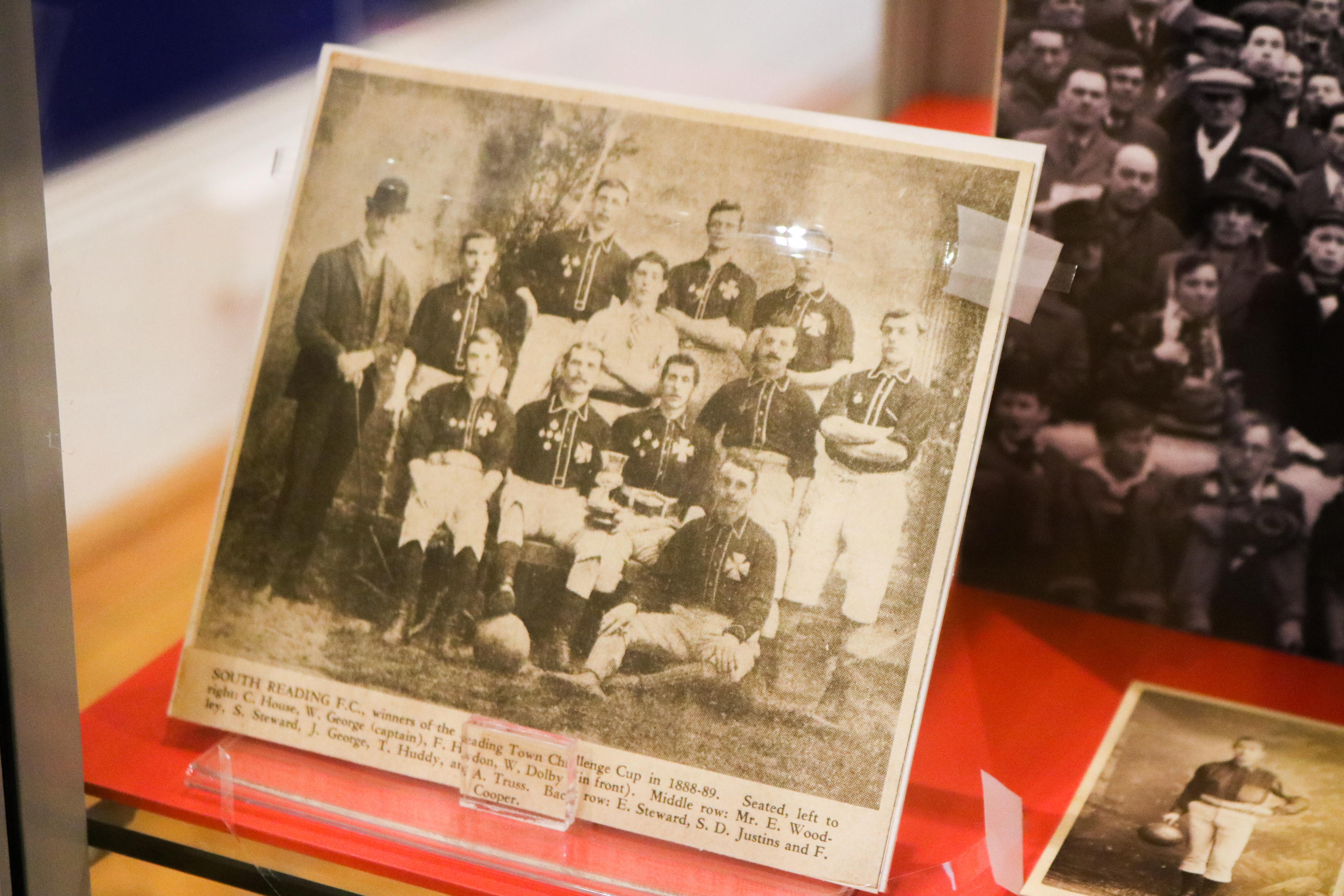Written by Roger Titford, author of The Lost Years of Reading FC and Treasurer of the Supporters Trust at Reading.
The rarest surviving physical artefact from Reading FC’s first twenty-four years as an amateur club (1871-95) is an ancient and flimsy cloth-bound minute book.
Whilst there is also a programme from 1894 and copies of several team photographs, they have nothing of the minute book's richness in telling the story of the Club's earliest years.

A minute book used by Reading FC from 1876 to 1890.
Reading FC in the 1870s
The beginning of the minute book both tells us a great deal and implies much more.
The first entry is dated to the 7th September 1876, getting on for five years after the Club was founded in 1871. There is no indication of the existence of any previous minute books. Like many football clubs, starting out as a venture organised by friends and neighbours, there was no requirement for formal records. By 1876, the Club had played just forty-five friendly matches in five seasons, so it might be regarded as a fairly casual enterprise.
The need for the minute book in 1876 suggests that Reading FC was getting more serious. The lengthy first entry details the proceedings of the Club's annual general meeting. This includes the election of officers (such as team captain and secretary), the desire for a tweak to the shirt design, and the team's practice schedule. Practices often took place early in the morning before the players went to work.
The venue for the meeting was ‘the Reading Room situated in Gun Street’. Further research shows that this was on the first floor of 10 Gun Street. This building still exists, next door to the Purple Turtle, and is currently vacant, having last been used as a community health centre. The chairman of the meeting, James Simonds (then the president of the Club), recalled that the Club was formed ‘in a small room in Gun Street’. It is doubtless that it was this one, available for hire from St Mary’s Church, where he and the founding secretary Joseph Sydenham worshipped.

Early Club meetings took place in a building that neighbours the Purple Turtle, today a popular Reading nightclub and venue. (REDMG : 1998.14.9)
From headquarters, to Hornets
The next entry in the minute book, dated to the 5th October 1876, was written in a different location: The Queens Hotel on Friar Street (the site of the old General Post Office, where the Slug & Lettuce is today). This became the Club's headquarters.
The entry covers the election of new members, including Charles Field (a major player for the Club and future Mayor of Reading), and the establishment of a set of eight Club Rules. We learn that men had to pay a 5s (25p) annual subscription in order to be a playing member, that practices were at 7am on Monday and Friday and 3pm on Tuesday, and that 'on match days the following to be the costume; jersey, stockings and cap of the above colours (dark blue and white) with dark blue serge knickerbockers'.

A Reading FC kit featuring the iconic blue and white.
The minute book indeed signalled the start of something more serious. A record twenty matches were played during the course of the 1876-77 season. Two England internationals (Brownlow Haygarth and Edgar Field) turned out for Reading while their opponents fielded several more. And Reading took on London opponents, the Pilgrims of Tottenham, for the first time on a home and away basis.
Things were also getting serious in another way. Many members of the Club also played for a rival town team, the Reading Hornets, and the Hornets stole a march by entering the FA Cup in 1876. In the Hornets team for the FA Cup-tie were the Reading captain and other Reading players.
The minute book sheds some light on the odd relationship between the two clubs, both as friendly rivals and fierce foes. They shared grounds, kit, and players, but played each other with great intensity. One match in 1877 led to a falling out, and the minute book records: 'it was decided that owing to the unpleasant way in which the two matches were played during the last season that this Club should refuse any challenge that might be sent (carried 7 to 1)'.
Some old histories maintain that Reading Hornets merged with Reading in 1877, but the minute book shows that to be untrue. It was simply that two of the best Hornets players joined Reading, and the Hornets never formally called it a day. You can find more about them on the Internet today!

The Reading FC team of the 1888-89 season. The team's kit is rather different to those worn by clubs today!
A Reading United?
The minute book continued to record behind-the-scenes events, Club politics, and debates that never reached the local newspapers until 1890. Sometimes, there were only two or three entries in an entire season. At others, the books sheds a rare light upon how fragile the Club’s very existence was in those early days. This was particularly the case in the late 1880s.
At that time, the Club was so weak that it merged with several other teams, absorbing Kendrick FC, taking on half of the Earley Club, and even recruiting the entire Theale team to represent it. The other major clubs in the town came together with a proposal to amalgamate into a ‘super-club’ called Reading United. The entry for the 2nd May 1890 reads: 'Reading decline to take part in the proposed amalgamation of the clubs of Reading'.

Over a hundred years later, legendary Reading FC chairman Sir John Madejski celebrates an historic Championship win.
Although the proposal floundered, and Reading FC survived, the minute book uniquely shows what a close-run affair it was. Without this source, we would know far less about the Club’s tumultuous early days.
Visit the exhibition
COLLECTED: 150 Years of Reading FC tells the story of the 150-year history of Reading's football club, from its earliest days as friends playing at King's Meadow, to the heights of the Premier League. Visiting is free. Plan your trip to Reading Museum today!





